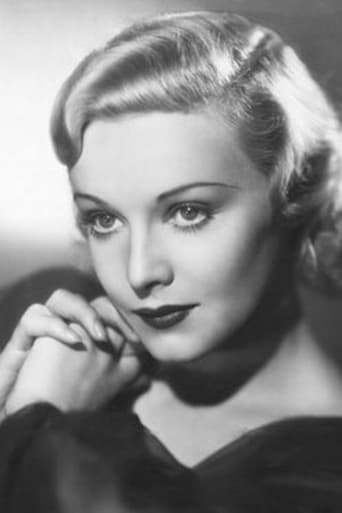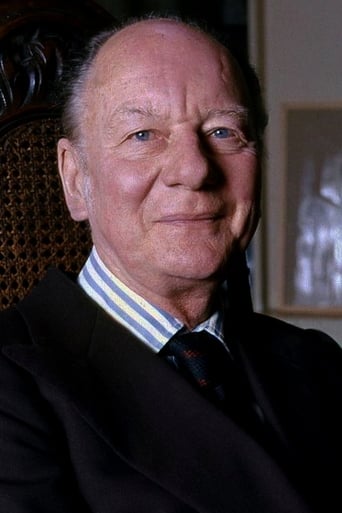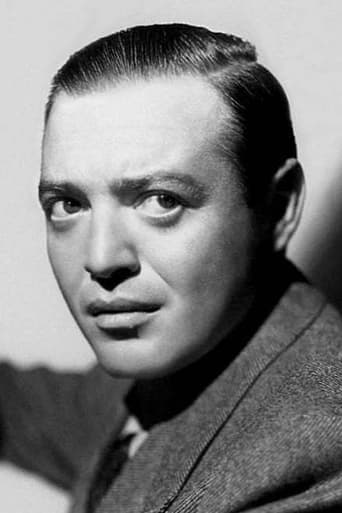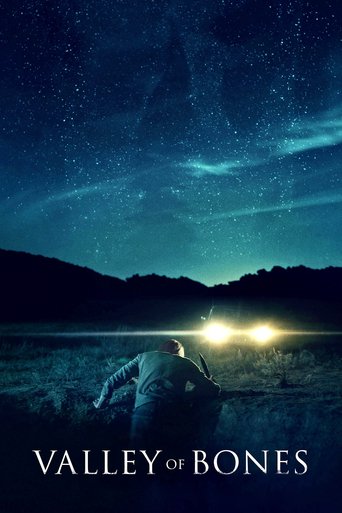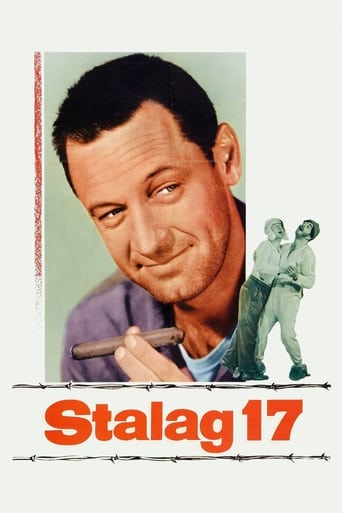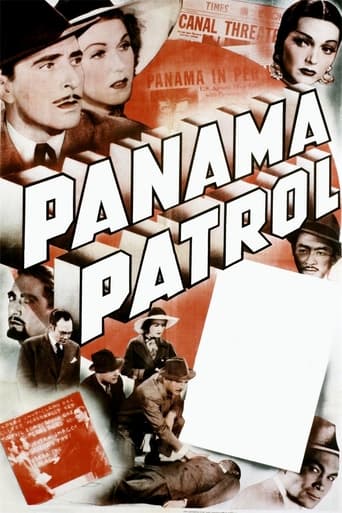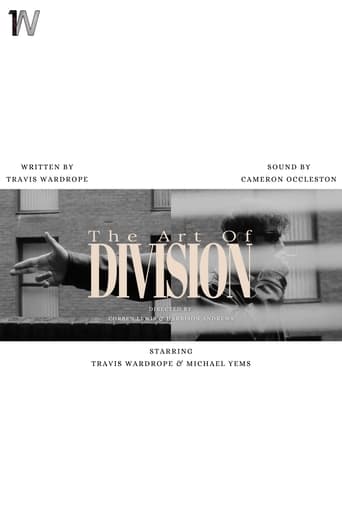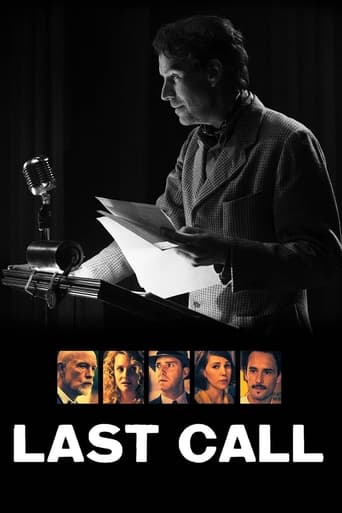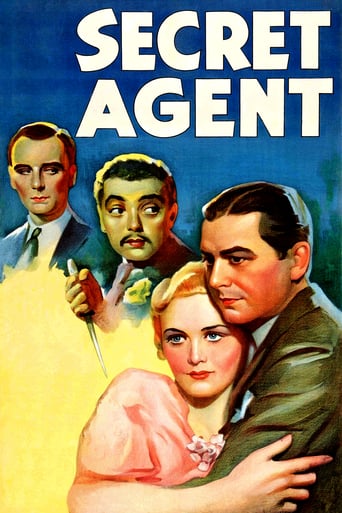

Secret Agent (1936)
After three British agents are assigned to assassinate a mysterious German spy during World War I, two of them become ambivalent when their duty to the mission conflicts with their consciences.
Watch Trailer
Cast


Similar titles
Reviews
It can be hard to separate out modern sensibilities and expectations from enjoying old films -in context- but if you consider '39 Steps' and 'Sabotage', this film is lacking.H. tries some cinematic tricks near the end that leaves the viewer more confused than informed, and relies on weak associations rather than direct narrative to conclude the plot. I think the charitable view here is that there are several experiments in this film that he later perfects, but are seen in their untested form.Unusually for H. this plot drags and stutters, rather than provides a continuous flow, which is why this film is destined to be enjoyed by H. historians and curiosity seekers more than people who love films and judge them by their own lights.
This was Hitchcock's third espionage thriller in a row (after THE MAN WHO KNEW TOO MUCH and THE 39 STEPS), clearly having found his niche in his UK sound film career. This shares a good deal with its predecessor. Both involve espionage and budding romance. In this the identity of the sought after spy is cleverly hidden until the end of the film, but as with THE 39 STEPS, the McGuffin has been in front of our noses since the beginning of the film.Madeleine Carroll appears a second time as the female lead, as she did in 39, and again proves herself a very good actress, both dramatically and romantically. Gielgud is a surprise, playing a contemporary role without a bit of his later assumed effeteness or accented theatrical voice. Robert Young is an anomaly – what is an American actor doing in a UK film??? As usual it is Peter Lorre who steals the film, as he did with THE MAN WHO KNEW TOO MUCH, this time giving an entirely different supporting performance as an emotionally wild Hispanic hit man. The release year was the first for the Supporting Actor category at the Oscars and he was undeservedly overlooked – a nomination was certainly in order.The film is set in 1916, during WWI, though there is no attempt to use period clothing. There are many memorable moments: the drone of the organ throughout the scene where the first body is discovered slumped over the instrument; the false clue of the button's owner at the roulette table; the chase through the train at the end, mirroring a similar scene in 39. The great suspense center piece of the film involves cross-cutting between the assassination scene and a domestic tea party, with the anxiety of the event going on outside superbly registered in both Carroll's facial movements and the behavior of the intended victim's agitated pet.It ends rather abruptly and not too satisfactorily, as if Hitch had run out of ideas. There is one goof when Young refers to Carroll's Adam's Apple. Women don't possess this feature, which belong entirely to the male anatomy.All in all, this is stylish, elegant, a mix of humor and intense drama, that is wonderfully entertaining. My print ran 1:25:53. Highly recommended.
This is the very sort of thriller that defines "Hitchcock", and what he can do.It's a spy thriller in which the hero must be an unwilling participant in an assassination of an enemy agent.That's the main story, which underlies the "thriller" part of the film.Even in 1936, audiences knew who the "spy" was, if only by the way the film was "billed", and the genial nature of the man we know will be the spy.We also know that the first "assassination victim" will be wrongly killed, an innocent man.Three agents are involved in the assassination. The hero and heroine are very guilt ridden, and question their ethics. The third, played by Lorre, is the ultimate assassin, a professional who has no qualms about his duty.The "assassination" scene, with the cutaways to the dog, is a landmark scene, one of the greatest directorial achievements ever. The emotion is unsurpassed in cinema, and it didn't take a huge budget. Just brilliance in directing.This is the "suspense", "wit", "drama", and "style" that Hitchcock was famous for. This was his ultimate achievement. Don't pay attention to those who lambaste it. There is still jealousy in this business, and they're lambasting is simply a cover up. This is a classic film.
The series of espionage thrillers produced at British Gaumont Pictures in the mid-to-late 1930s, scripted by Charles Bennet and directed by Alfred Hitchcock, have a consistent quality to them. They don't repeat characters or plot elements, but they all follow a similar winning formula – not merely that of Hitchcockian suspense (of which there isn't really that much in Secret Agent), but of the notion that scrambling all over Europe bumping off spies and leaping off trains, constantly in fear of your own life, can be made to look rather good fun.First we have the cast and characterisation. A relatively young John Gielgud takes the lead and, although the director reportedly didn't like his performance, he does here epitomise the classic British hero. Laid back, unassuming, with an air of effortlessness, he is in some ways reminiscent of a certain other fictional British spy popularised in the latter half of the twentieth century, although Gielgud's Ashendon is far more human than the somewhat mechanical Mr Bond. Paired with a bubbly and very believable Madeleine Carroll, and supported by bluff gentleman Percy Marmont, chirpy yank Robert Young and crazy generic foreigner Peter Lorre, the overall feel is like one of those "Brits on holiday" comedies. The only difference is, occasionally people kill each other or send out coded telegrams.Then there is the Charles Bennet screenplay. Bennet was, after Elliot Stannard in the silent days, the second writer to really work well with The Master of Suspense. Like Hitch, Bennet loves double meanings and secret knowledge. Take the scene where Gielgud arrives at the hotel finds out from the clerk that his new persona has a wife. He asks the clerk "Did she look well?" meaning of course "Is she attractive?" It is of course a little joke with no bearing on the plot, but it's moments like this that keep us engaging with the material and root us in the world of spying and bluffing. He also brings characters in with memorable bits of business to give us strong and meaningful impressions of them – for example Peter Lorre chasing a woman up the stairs or Percy Marmont being introduced when Gielgud trips over his dog.And then there is the director, who is let's face it the only reason anyone pays attention to what would otherwise be obscure English films in the first place. Hitchcock has simplified and streamlined his technique, which a few years earlier had been little more than a needlessly showy display of camera tricks. He's still not subtle – he never would be – but at least he is now tasteful. We see here his regular method by which the camera leads the audience by the hand, dollying in on an object or throwing a close-up at us as if to shout "Look at this!" What's good about it is that it allows Hitchcock to move the audience at any rate he wants. At the end of the first scene there is a dolly in on a portrait of a soldier. No-one is looking at or gesturing at it, but Hitch forces us to take notice. Later, when Gielgud walks into his hotel room and finds both Carroll and Young inside, there is a quick montage of close-ups as he checks he has the right number, and we essentially ride with his thought process for a few seconds.Secret Agent is by no means as good as The 39 Steps or The Lady Vanishes, not really having any major build-ups of suspense or danger. However, it does gently pull us along for a well-paced and slightly irreverent ride, and is ultimately watchable because it has very few bad bits. It is a good example what Hitchcock and co. were creating at Gaumont – pictures which were undemanding on the attention because they were smooth, unpretentious and yet continually gave us something to tickle the brain.


